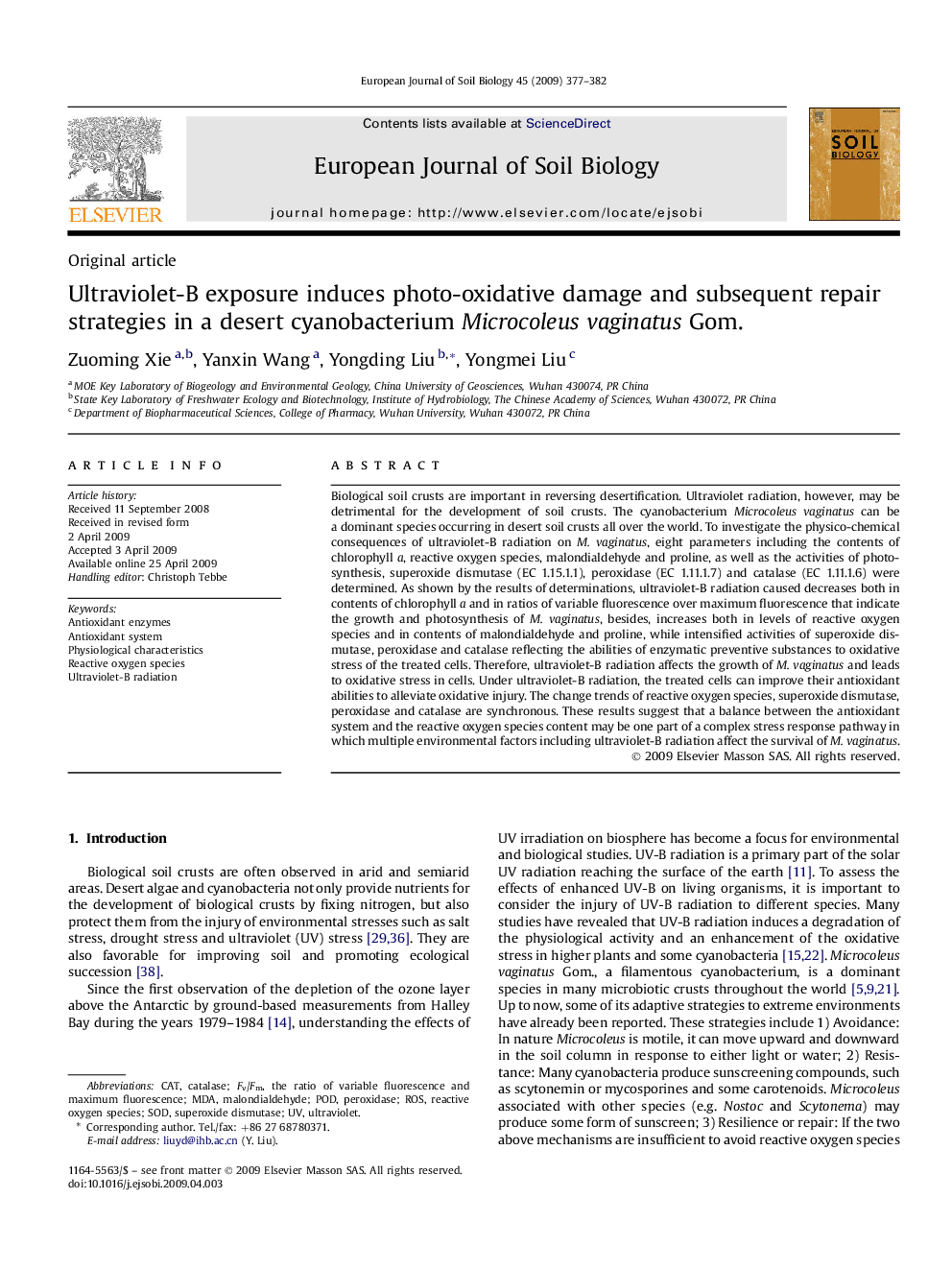| Article ID | Journal | Published Year | Pages | File Type |
|---|---|---|---|---|
| 4392203 | European Journal of Soil Biology | 2009 | 6 Pages |
Biological soil crusts are important in reversing desertification. Ultraviolet radiation, however, may be detrimental for the development of soil crusts. The cyanobacterium Microcoleus vaginatus can be a dominant species occurring in desert soil crusts all over the world. To investigate the physico-chemical consequences of ultraviolet-B radiation on M. vaginatus, eight parameters including the contents of chlorophyll a, reactive oxygen species, malondialdehyde and proline, as well as the activities of photosynthesis, superoxide dismutase (EC 1.15.1.1), peroxidase (EC 1.11.1.7) and catalase (EC 1.11.1.6) were determined. As shown by the results of determinations, ultraviolet-B radiation caused decreases both in contents of chlorophyll a and in ratios of variable fluorescence over maximum fluorescence that indicate the growth and photosynthesis of M. vaginatus, besides, increases both in levels of reactive oxygen species and in contents of malondialdehyde and proline, while intensified activities of superoxide dismutase, peroxidase and catalase reflecting the abilities of enzymatic preventive substances to oxidative stress of the treated cells. Therefore, ultraviolet-B radiation affects the growth of M. vaginatus and leads to oxidative stress in cells. Under ultraviolet-B radiation, the treated cells can improve their antioxidant abilities to alleviate oxidative injury. The change trends of reactive oxygen species, superoxide dismutase, peroxidase and catalase are synchronous. These results suggest that a balance between the antioxidant system and the reactive oxygen species content may be one part of a complex stress response pathway in which multiple environmental factors including ultraviolet-B radiation affect the survival of M. vaginatus.
